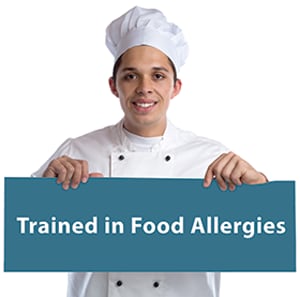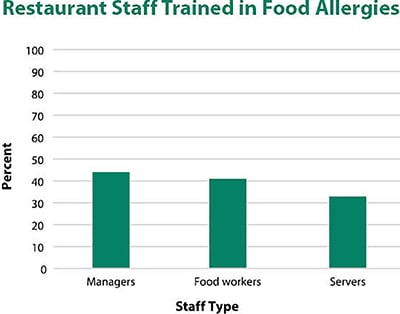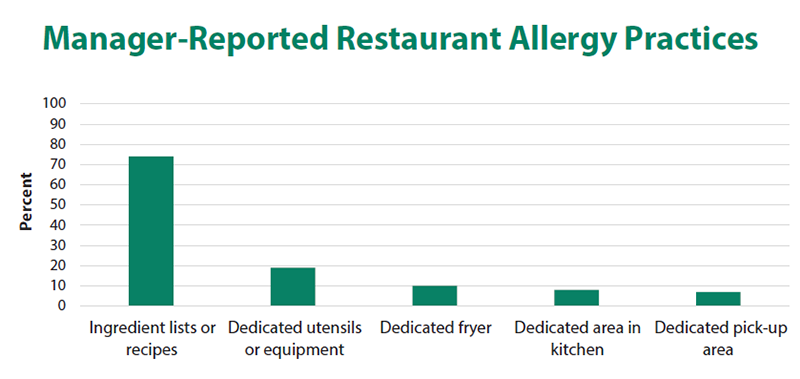
How Restaurants Address Food Allergies
EHS-Net Findings and Recommendations
EHS-Net Recommends

We recommend that restaurants
- Provide food allergy training for staff.
- Use dedicated equipment and areas for preparing and cooking meals for customers with food allergies. When this is not feasible, restaurants can clean equipment and workspaces before preparing meals for customers with allergies, according to the Food and Drug Administration’s Food Code guidance.
- Have ingredient lists or recipes for menu items available if they aren’t already.
These practices can help reduce the risk of an allergic reaction.
Why This Study Was Done
Food allergies are a growing public health issue:
- About 15 million Americans have food allergies.
- Food allergic reactions are responsible for about 30,000 emergency room visits and 150-200 deaths a year.
Many food allergic reactions occur in restaurants—one in three people with food allergies have had a reaction in a restaurant. Understanding how restaurants address food allergies can help to reduce the risk of food allergic reactions in restaurants.

What the Study Described
The purpose of this study was to find out how many restaurants
- Train their staff on food allergies.
- Have ingredient lists and special equipment and areas for making food for customers with food allergies.
What the Study Found
Many restaurants could do more to reduce the risk of food allergic reactions.
- Less than half of interviewed restaurant staff had received training on food allergies. And training often didn’t cover important information such as what to do if a customer has an allergic reaction.
- Most restaurants did not have dedicated areas and equipment for preparing and cooking allergen-free food.
Most restaurants did have ingredient lists or recipes for some or all of their menu items. Ingredient lists and recipes are important tools in reducing the risk of food allergic reactions. Customers with food allergies rely on restaurant staff to provide them with accurate information on ingredients.

What Is EHS-Net?
This study was conducted by the Environmental Health Specialist Network (EHS-Net). EHS-Net is a federally funded collaboration of federal, state, and local environmental health specialists and epidemiologists working to better understand the environmental causes of foodborne illness.
Want More Information?
Restaurant food allergy practices – six selected sites, United States, 2014 (scientific article this plain language summary is based on)
How Restaurants Address Food Allergies[PDF – 223 KB] (fact sheet version of this page)
Food Allergies: Knowledge and Attitudes of Restaurant Managers and Staff (plain language summary of another food allergy article)
Food Allergens Study (study information)
More EHS-Net publications by Study Topic or Citation






















.png)











No hay comentarios:
Publicar un comentario